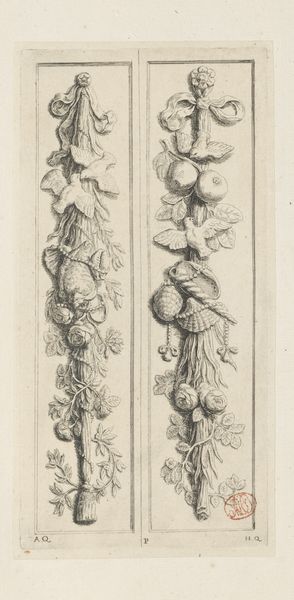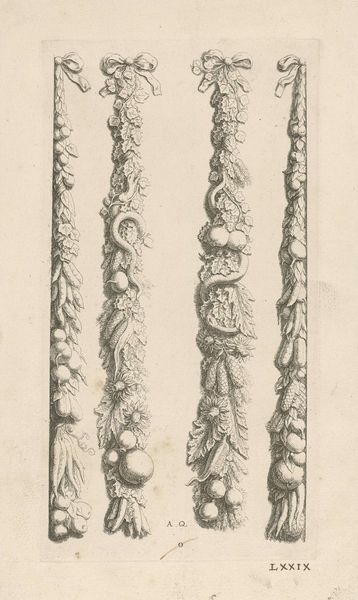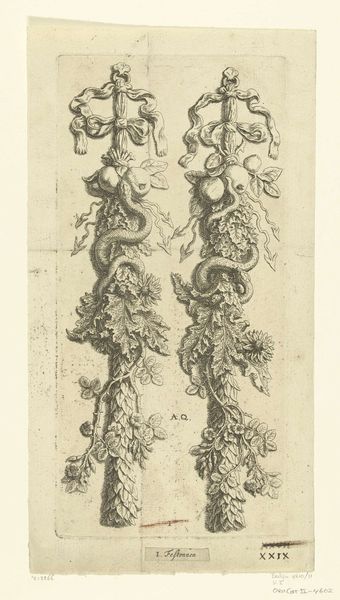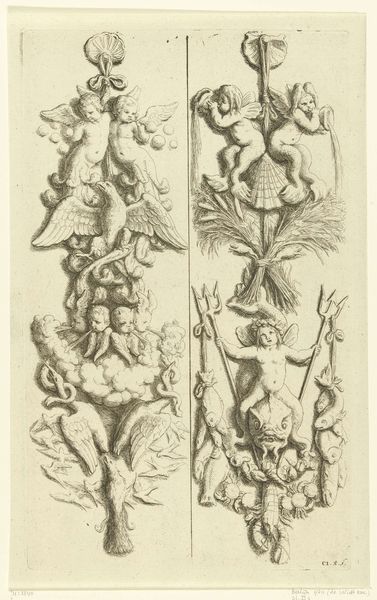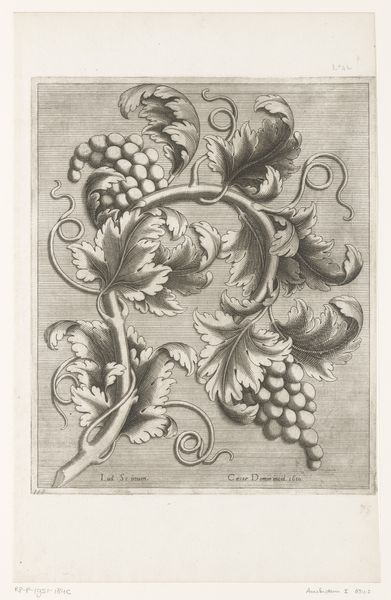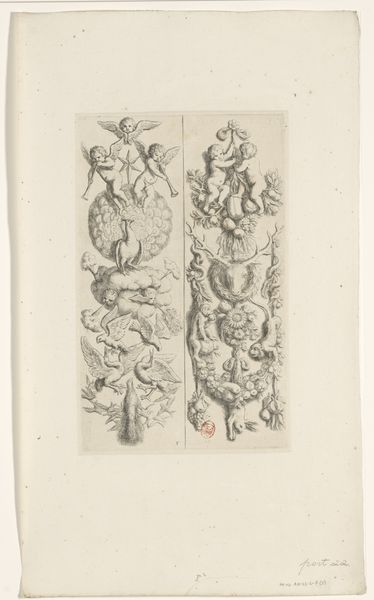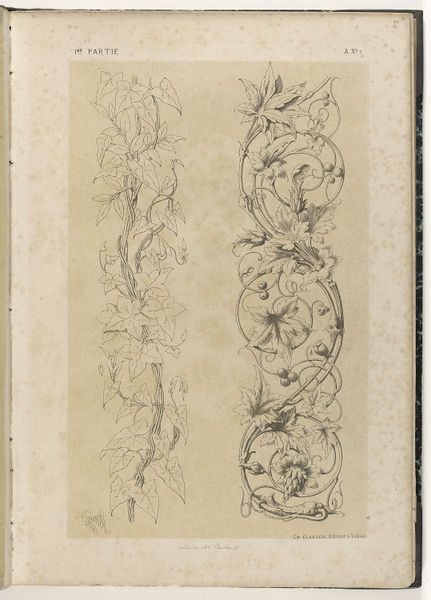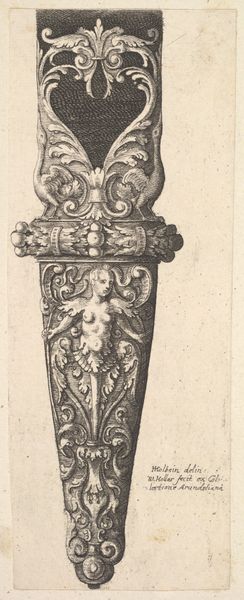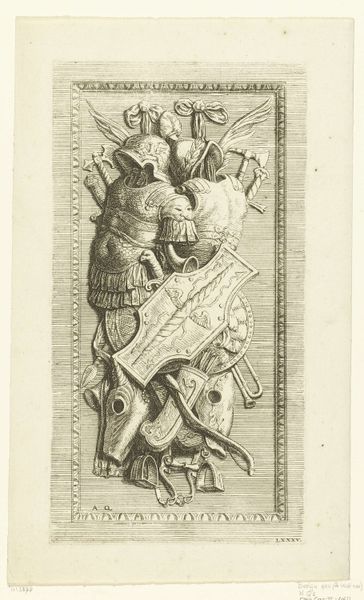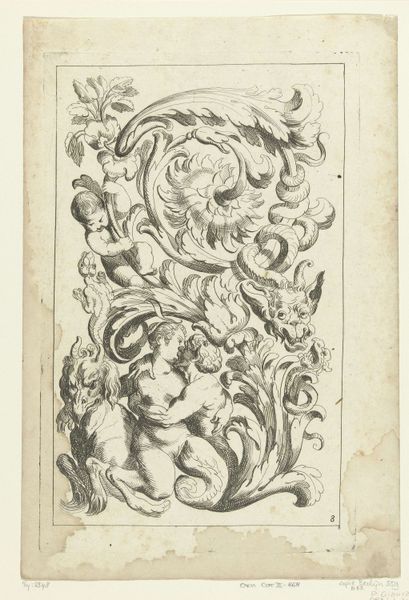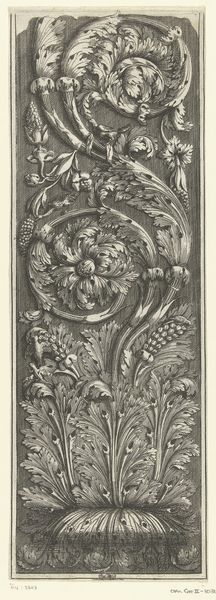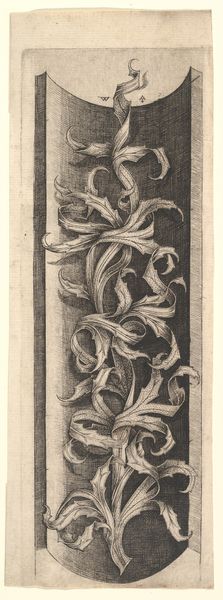
Pilasterfestoen met eekhoorn, fruit, bloemen, bladeren en maïs tussen galerij en Burgerzaal in het Stadhuis op de Dam 1655
0:00
0:00
carving, etching, engraving
#
carving
#
baroque
#
etching
#
fruit
#
line
#
decorative-art
#
engraving
Dimensions: height 304 mm, width 122 mm
Copyright: Rijks Museum: Open Domain
Curator: Here we have Hubert Quellinus' "Pilasterfestoen met eekhoorn, fruit, bloemen, bladeren en maïs tussen galerij en Burgerzaal in het Stadhuis op de Dam," a carving made in 1655. Editor: My first impression is one of abundant, almost overwhelming decoration. The composition is quite packed. Curator: Indeed, it's a masterful example of Baroque decorative art, characterized by its elaborate ornamentation and dynamic energy. Consider how Quellinus uses line to create a sense of depth and texture, almost as if it were a three-dimensional sculpture. Editor: What strikes me, though, are the chosen motifs. The squirrel, the overflowing fruit, the corn… They seem carefully selected. Do you see the cultural symbolism within this etching? Curator: Absolutely. The inclusion of the squirrel, for instance, might represent industriousness or even a playful embodiment of abundance. Fruit is often a symbol of fertility and prosperity. Editor: And don't forget the maize. Introducing maize, a New World crop, could allude to Amsterdam’s global trade connections and burgeoning wealth. There is clear messaging within each image. Curator: Interesting, and to take that reading further: Structurally, the pilaster itself—a flat, vertical support—suggests stability. When coupled with festoons teeming with nature, we can see the interplay of both architectural restraint and exuberant vitality. Editor: These overflowing elements might reflect a broader sense of Dutch national pride and the opulence of the era, communicating cultural strength via symbolic and visual shorthand. It makes you consider what public art really stands for in the face of a shifting history. Curator: A beautiful synthesis of form and content, capturing the spirit of the Dutch Golden Age. It is as much an aesthetic statement as it is a cultural one. Editor: Ultimately, this carving leaves me pondering the nature of prosperity itself—how societies visually define and represent wealth and plenty.
Comments
No comments
Be the first to comment and join the conversation on the ultimate creative platform.
